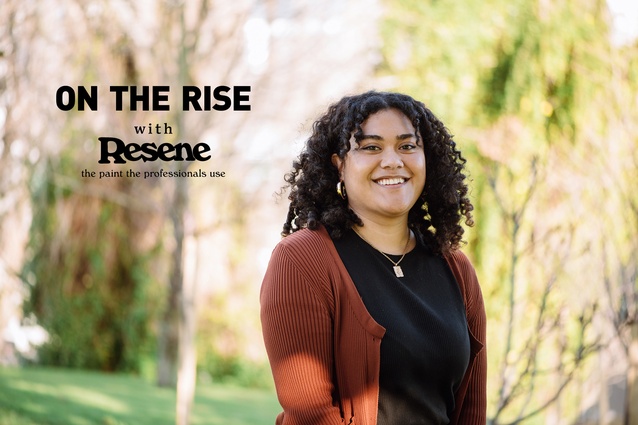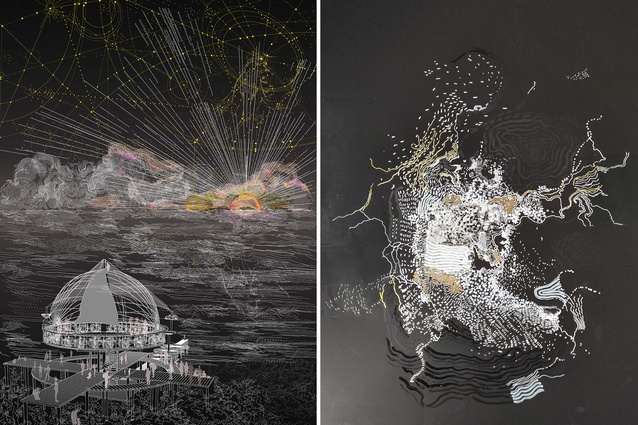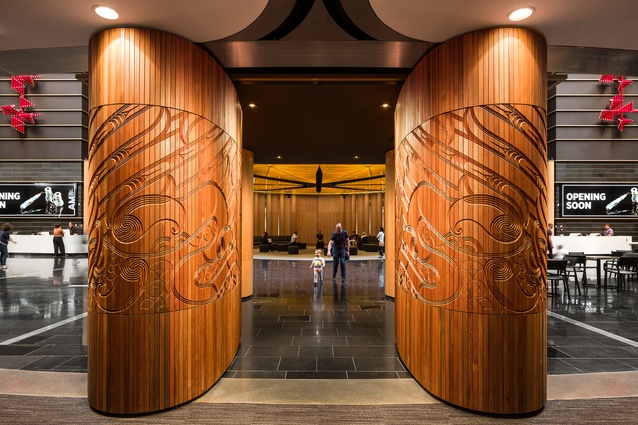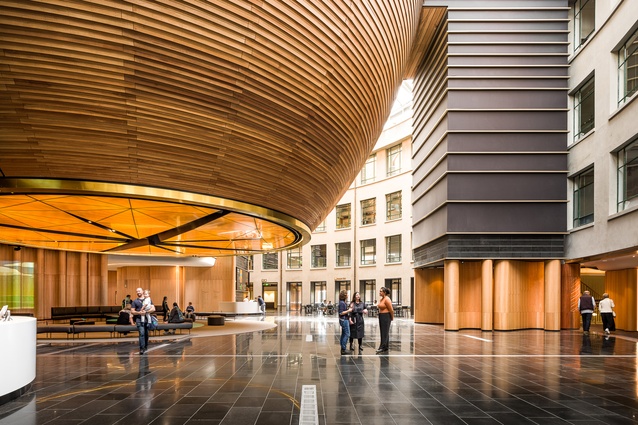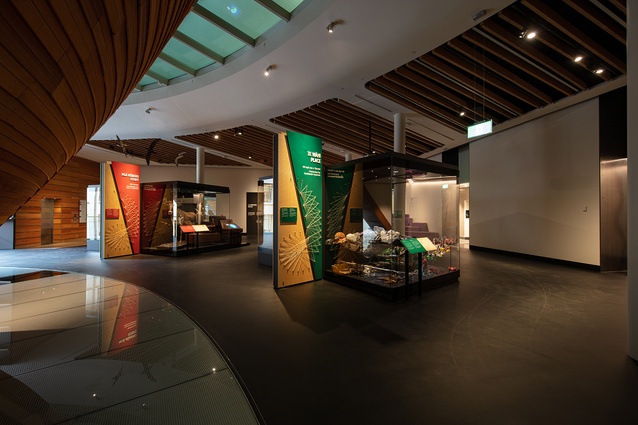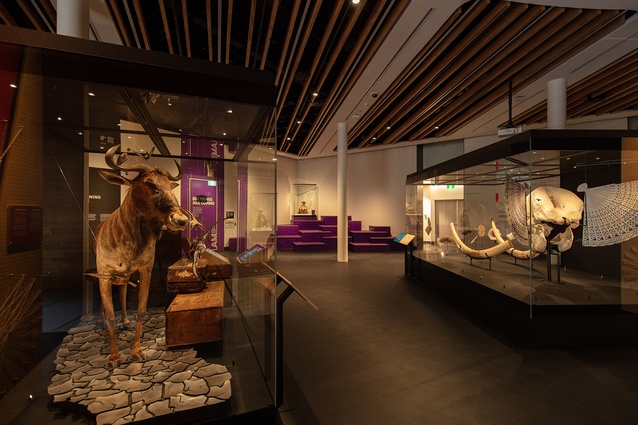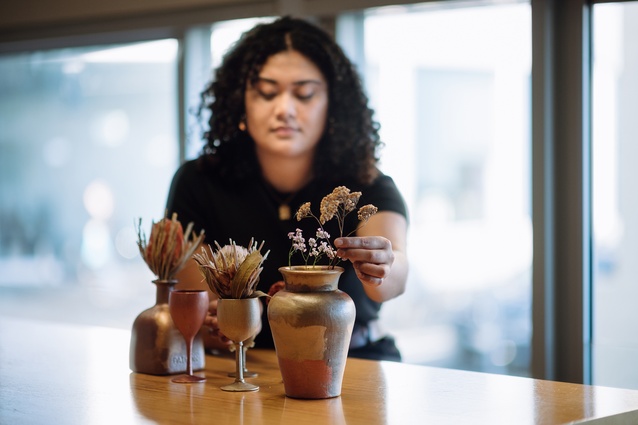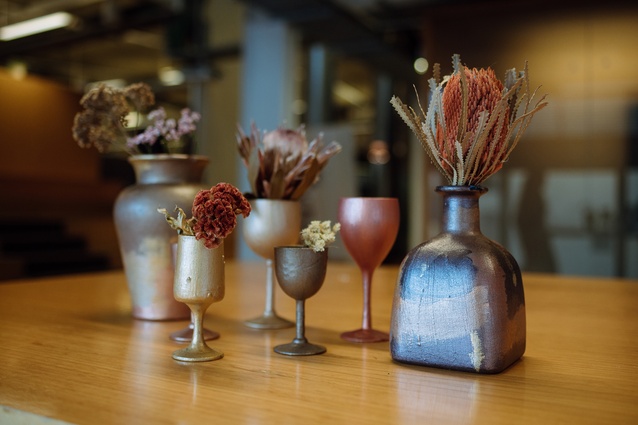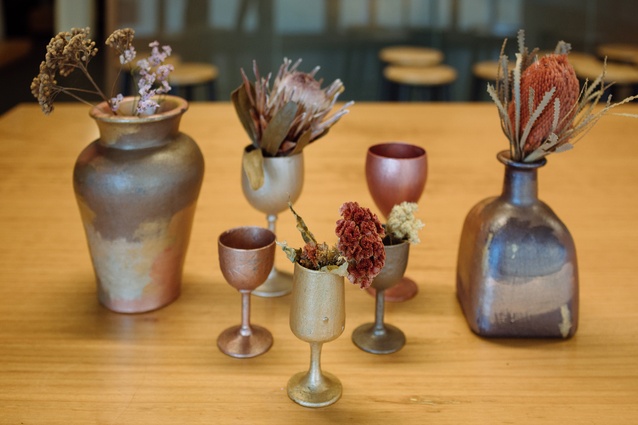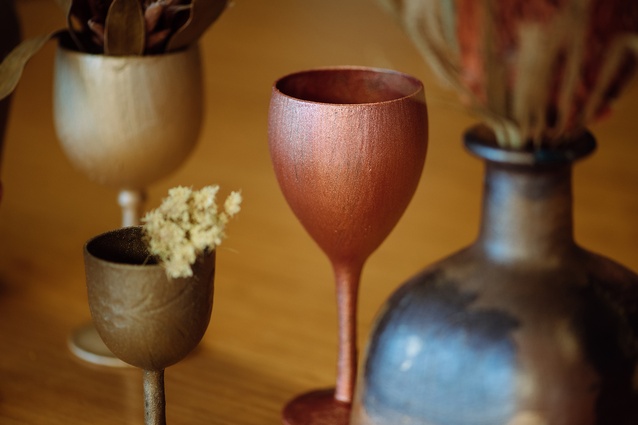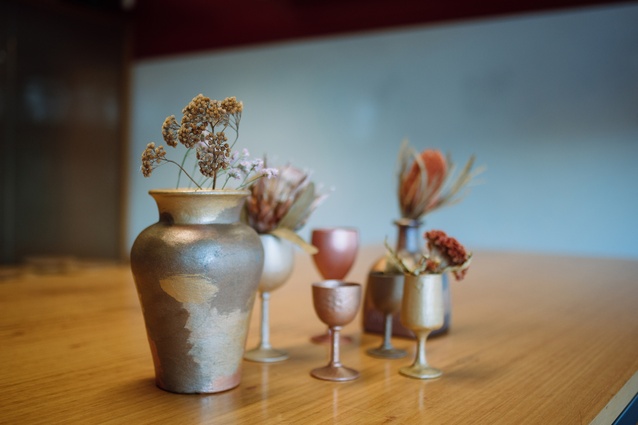On the Rise: Icao Tiseli
The latest in our On the Rise series, supported by Resene, which profiles up-and-coming designers across Aotearoa, sees editor Ashley Cusick catch up with Tongan graduate Icao Tiseli from Jasmax. She has been exploring visibility and creativity both for personal and collective development.
Ashley Cusick (AC): How did you become interested in architecture?
Icao Tiseli (IT): It all started from not knowing a lot about it, actually. I didn’t know anyone in it. I had no family members tied to architecture and none of my family members were interested in engineering, So, I didn’t have that background to work through. I was naturally creative, but I also appreciated the understanding of structure. I heard about it, and I was intrigued because I realised not a lot of my people were in the field. I wondered why that was. That curiosity kind of led me into it blindly.
AC: So, you didn’t really know what you were getting yourself into when you started your bachelor of architecture.
IT: Absolutely not. Some students come in with a strong understanding of structure, or they have fluency with the rationale. Then you have those who are more fluent creatively with the concepts and the ideas. My creative flair was a bit obvious, but architecture school really shakes up the concept of what architecture is for everyone, I think. Then it situates you down the line. It was great because that really bonded my year group and me.
AC: Do you feel like studying and subsequently practicing architecture stretched that creativity you had? With art, you can be a bit more boundless, whereas in architecture you often have to create to the constraints of the brief.
IT: You’re totally right. There are obvious differences between study and practice. With academia, you don’t have the realistic constraints that industry has to tackle. Often before a concept even flourishes, it has to undergo a series of checklists to be perceived as fruitful. So, in academia, you thrive in the sense that you do not have these real-world constraints. You’re also functioning from a place of being your own star architect, essentially, which makes you the sole source of the vision and the execution as well. But in industry, you get confronted with the realities of a project and that is teamwork, leadership, clients, engagement. You engage more with a brief and the brief is the embodiment of the process. In architecture school you can use the brief as a platform to get to a space you want to go to. You’re led by your curiosity.
AC: I suppose designing something viable within those real-world constraints is a form of creativity in itself.
IT: That’s right, and it’s also a form of creativity to work with others, to collaborate and to engage and communicate with your client and consultants. Creatively, you can look at ways to help you in these endeavors. In academia, it is more prevalent that you are aware of why you’re making the decisions you are making. You can lean into the dream-like state of a conversation or an idea or an exploration, which is both beautiful and fruitful in it’s own way. It means you can really look into ways of problem-solving that industry just cannot entertain because time is money. I think both exist at the same time, and both are essential to each other’s growth.
AC: You said before that you didn’t see a lot of people that looked like you in the field when you considered going into architecture. Did that ever make you reconsider studying architecture?
IT: The imposter syndrome is real. And every year, I felt that. In some capacities – now looking back at it through reflection – it just instilled a sense of strength and resilience to pursue this thing called architecture, whatever that means. Usually, the individual is engaging with the process, as opposed to a team. That in itself as a conversation is not normal for someone from a Pacific cultural background. We think as a collective. By that I mean, it’s like an ecosystem. No one is in the centre of things. It’s about all of us contributing, doing our work diligently to help all of us progress. In architecture, I reflect back and I think a lot of tension and resistance I felt was because I was constantly asked as an individual to represent myself and my idea. I didn’t hold the words to understand what those points of tension meant for me at the time, but I felt it. I didn’t know how to articulate it until now. I’m still accumulating the language to talk about these experiences to this day.
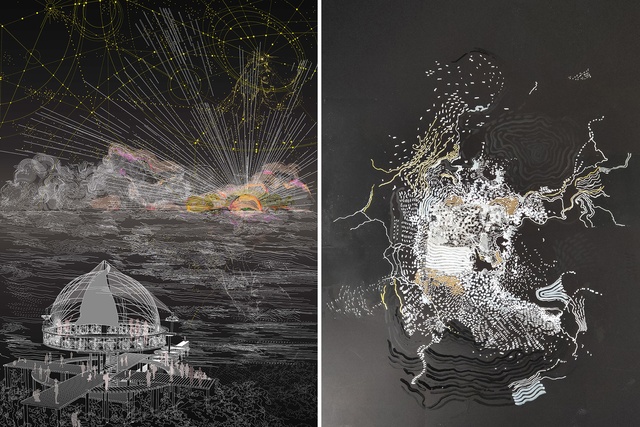
AC: You gained a lot of personal recognition as well, having received a Highly Commended prize at the 2018 NZIA Student Awards.
IT: It was pretty difficult. I actually didn’t think I needed to be in the Student Design Awards. Not because I didn’t think the project was worthy of it; I just thought, what did I need to prove? And, not because it couldn’t be critiqued. It was because it was another competition that centred the individual, which contradicts what my project is speaking towards. It’s about lived-in experiences, shared by all. It’s about providing a platform to convey that different people have different experiences. And it’s about showing that design and architecture can allow for this conversation to occur, safely and culturally, through a place of understanding. I ended up doing it because it hit the core of another area that I think is important, and that is visibility. That put things into perspective for me. I saw myself being a conduit, or being one of the many faces that came before me and, hopefully, one that can help someone else in the same position. It helped me to decentralise the self and the one project and the “me” of it all. I’m really grateful that I did. I see my success not being mine, but I see it as my family’s. If I win, they win.
AC: Can you tell us a bit more about that thesis project that you entered in the awards?
IT: It’s funny because I’ve been in a series of talking about it, and each time I do, I talk about something different. It’s called Mapping the Feke, and the ‘feke’ is a term I’ve created as a nickname for my island, Vava’u. It has a high terrain, unlike Tongatapu, which is the main island. It has ridges and long arms that stem down to the sea, which look like tentacles to me. The feke is the octopus. Scattered in front are little outer islands called motus. To me, it looks like a microcosm of the Pacific. It is it’s own little archipelago. I thought that was quite poetic. My project looks as Vava’u as an active participant. It uses all the elements and accounts for the fact that, in order to engage with this site, you have to navigate through the water as a bridge and the land shifts and moves alongside you. I think someone else noted this and I’m keeping it: it is a critique on pedagogy.
The form is a navigation school and it engages with the site through a series of classes that give you a deeper sense of the embodied experience of that culture. So, you look into Tonga’s geotectonic language through one of the classes. You look into understanding how to navigate through vaka, which hold an embodied understanding of the land and the sea and the sky. You look into interrogating what the sky is telling you in terms of information. Through all of that, over 30 days, you end with a map that you leave behind in the archive for someone else to see one day, to see a world that hopefully looks like theirs. It’s about indigenising our curriculum, which I think is what I was gearing towards.
AC: Did you have Tongan or wider Pasifika ideas around design and architecture that you grew up with? Or, is that something that you have engaged with as you’ve learned more about design through schooling?
IT: That’s a really good question because what you’re asking about is the difference between a lived-in experience and something like re-learning those things. I grew up in a traditional Tongan household. I knew nothing else but to be Tongan. It wasn’t until I went to university that I saw myself and my culture being challenged through my experiences. It was good, and it was difficult. It did help me with my thesis because I knew exactly what my project would be. I knew it would be based in the Pacific Islands, specifically in my mother’s home island, Vava’u. Visibility was part of that choice subconsciously, but it was also about understanding how different sites are different. And, those differences come from the community and the conversation about what culture looks like for someone who is living and breathing in that space.
I was almost, in a way, relearning about the importance of culture through the everyday. That made me critically reflect on what was embedded in me through lived-in experiences, which made me see that architecture (for me personally) isn’t about big gestures or big moves, it’s about understanding who I speak for. I was choosing consciously to speak on behalf of the everyday individual on this island. That was the catalyst for how I saw my project and how it developed. I’m decentring the self, the ego, but also accounting for the quiet murmurings of the everyday life. Weirdly enough, through observing the subtle engagements with, for example, going from here to there over a little land bridge that is so well known to those people, I was able to discern that these moments create the importance of the idea. That made me feel like I could speak about it in a way that felt culturally authentic to my space and my understanding and my experience.
AC: You also had a creative studio residency at Studio One Toi Tu where you delved deeper into this idea of mapping. Has the project evolved since you began it as your thesis?
IT: Yes and no – I think I used my thesis as a base point, but now in my image-making process I realise that maps are the form that really speaks to me. I’m not really interested in cartography; I’m interested in what was before cartography, which was the construct of boundary-making and surveyship. The maps that came before actually depicted much more uniquely how a society and a civilisation thought about their worlds. I see mapping as a language to allow one to have some insight, intangible insight, that is hidden in one’s place. Maps nowadays tell us exactly where we are and where we’re going, in terms of orientation. But, I’m not really interested in that. I’m more interested in embedding the map with a different set of values and, hopefully, that can create a different conversation about our built environment. Maybe we can start looking at our landscapes differently, and maybe we will start building differently. I think the map is an integral part of our work. But also, it is held frozen in time because we as a society have accepted that the Mercator projections – the form of map that we’re currently using – are the ones that we’re still using to this day. Mercator died ages ago and we’re still accepting this. It’s a conscious choice that we have all made as a civilisation, and I think it’s quite interesting that we still are old in that way of thinking. That’s where my curiosity grows and where it’s continuing to go. Mapping is a form of thinking. I use it in relation to my image-making process because I appreciate the depth it can hold and the simplicity of its nature.

AC: Did you feel a freedom when moving into a creative residency rather than working on an architectural thesis?
IT: Yes, so much, and I leant into that freedom. This time, I didn’t care as much about how things were placed on top of the map. With my residency, I used it as another way to develop my map-making process and to understand the inherent language that I have in my making. It was about teasing through, with my series of works, a language that felt aligned with the process. That gave me so much freedom because it unlocked different ways of constructing my maps. It also unlocked the fact that it is stemming from an honest place, which was something I didn’t anticipate would occur. It made me feel so liberated. It made me understand that I’m happy for the project to live and die in these moments. I’m okay with that. Whatever my thesis had created, it can stand on its own, and I’m okay with this language being something only I understand. I really appreciated that freedom.
AC: It might be hard to articulate, but how has this thesis project and the evolution of your map-making process influenced your architectural work?
IT: It is hard to talk about because it’s not always obvious. My map-making process stemmed from a need to exist outside architecture. It helps me personally understand that this is something that is my own. So, I keep that separation sacred. What I can draw from it in terms of a connection to industry, is that it helps me to see the opportunities behind a cultural conversation. It’s helping me to familiarize myself with the potential and the obvious gaps that exist in industry in regards to being a Pacific woman, Pacific grad, Pacific architect, Pacific academic.
I see where there are gaps in our industry that require support and action. There are obvious constraints with the lack of visibility and access when going from high school to university and from university to industry. These areas of natural progression require support to foster the transition of more Pacific and Māori students and peers. They can shift the industry into a space that feels like it’s normal to speak about culture. If these spaces have more solidity in their connection, then the conversation between culture and diversity and visibility will feel culturally safe.
Being one of very few Pacific women in these spaces is a reality I don’t think is necessary at this time. You shouldn’t be the first of anything at this point; we’re in 2021. We should be expanding. We should be looking at culture as a way of deepening our connection as opposed to dealing with appropriated works and the flimsy attempts of motifing culture. We need to develop that. What I’ve learnt in my thesis until now manifests in a form of agency. It’s accentuated my own agency and I am fostering those who come after me.
AC: Since you began working with Jasmax, you’ve been involved with the Te Ao Marama Auckland Museum project. What has that been like?
IT: The Museum was a gift for me. I see it as a gift in my life. I actually have two masters, one in heritage and conservation along with my MArch. All the papers I did in heritage and conservation were dealing with indigenous forms of conservation and adaptive reuse; trying to unpack if there are spaces of heritage and conservation in our mythology, in our history and in our practice. When the museum came, it was a perfect fit. I see a lot of my growth has come from working on it. The museum in itself is very unique because it had the right people at the right time in the right positions. That allowed for this venture to be fruitful, conscious and heavily embedded in developing a cultural conversation. I was able to meet artists and work with them on their installations and hear my team speak to them in a manner of advocacy. How we use and look after their artwork had the same amount of rigour applied as any other aspect, to make sure that the intention is conveyed. The technicality of each aspect was also very unique and helped me understand how things get built. It was a dream team; even our contractors and our guys on site were equally involved in the intention behind making sure that when we place these things up, they speak on behalf of us. It was a single objective that we all understood: that this was important culturally for all of us to do well. It wasn’t about undercutting each other or having small wins. It was about working together so that we get something at the end that we’re all proud to stand behind.
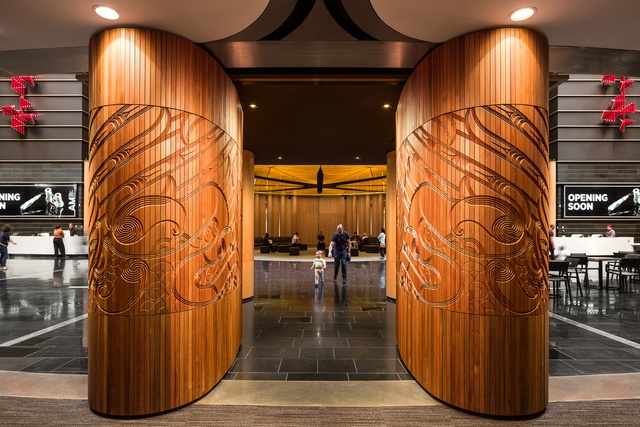
AC: You’re very involved in the architecture and design community as well as within your own community. What drives you to spend extra time doing these things?
IT: I’m involved with the Tongan Youth Committee, and that’s my way of feeling more connected. The longer I stay in New Zealand, the more I give up little bits of my belonging to Tonga. My language gets a little bit worse because I’m not using it every day. I won’t know what’s going on over there, which means I’m grounding myself in this place. Being active in the Tongan community here actually does more for me than I do for it. These things help me feel connected to my community, which is my source of purpose. That’s my purpose in life. The idea of doing it for visibility comes up because it’s an obvious one that people outside of my community can connect with and it makes sense to them. But, my true purpose is making sure that I have access to my community and that I can speak on their behalf when called for through places of lived-in experience. I want to make sure that I too am doing the work to be a part of it.
AC: What can we do to work towards a better, more diverse and inclusive architecture industry in the future?
IT: I am still figuring this out, too. I don’t know what this space will look like in two years. There are small moments of actioning these conversations. We recently did an open day here at Jasmax specifically targeting low decile schools – that is a conversation identifying the gap between who has access to this knowledge and to the understanding of this degree that is architecture, which I found is a huge gap. If you weren’t in a school located in town, if throughout your walks in and out of town you didn’t see architecture, then you wouldn’t think about this. That’s what open day speaks to.
We also did a Pacific and Māori crit night with Waka Maia where students were speaking and deepening their knowledge about their indigenous belongings through peers that can critically interrogate these concepts. That speaks to how you need to also be culturally competent through your investigations into culture. But, often, the people you’re presenting to need education. So, you’re busy translating, which holds you stagnant. It doesn’t deepen your knowledge. That was about giving those students the sense of depth to understand their concept and deepen it. It takes away the burden of translating it.
Actively seeking out spaces and initiatives to push these conversations through is my task that I place upon myself to show that I am actively pursuing this front. This is how I can give a little to my community, or I can give a little to the conversation. Whatever little platform I can have, hopefully, I can offer it to others. It’s not just me coming up. It’s about all of us. I speak to this because others before me have done the same to me. Elisapeta Heta, Monsul [Dewes-Tupara], Apenti [Tamanui-Fransen] with Waka Maia have all helped to use whatever their platform is to push up all of us behind them, so they’re not walking alone. And, I too, wish to put that into practice as well, because that feels culturally authentic and that feels natural to all of us. It helps us be the problem solvers. We’re not just sitting and waiting for the ideal world to arrive. We’re doing our small moves to help it through.
AC: And what about you personally? What are you hoping for in the near future?
IT: I’ve been sitting on the idea of what registration looks like for me. I think I can honestly say that I do want to be registered and not because I feel compelled to do it. I was struggling with the fact that everyone feels compelled to do it. I’ve been taking my time understanding what this is asking of me and if this is something that I want to be a part of. And, I do. I’ve reached the decision this year that I am happy to be registered.
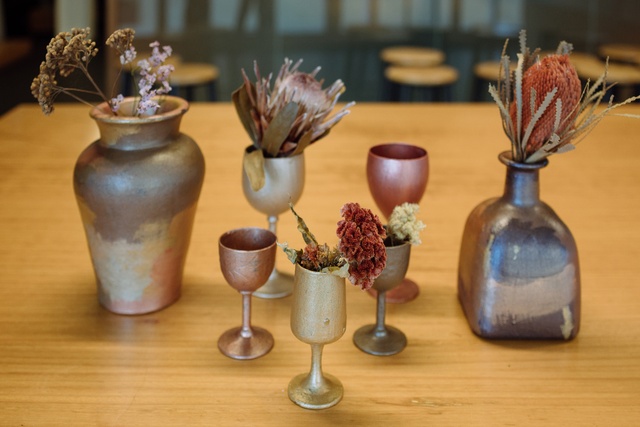
AC: Finally, we ask all of our On the Rise participants to create a mood board with Resene colours and products as a way to showcase what colour means to them. Tell us about what you’ve made.
IT: The choices for the colour palette were to depict that magical space of the unknown realms of dreaming aloud, to the memories and the stories we hold. In space, we are suspended and catapulted into worlds true and imaginary. To me, these colours symbolise the importance of dreaming.
See more from the On the Rise with Resene series here.

